Tiffany & Co. – a legacy of classic jewellery design

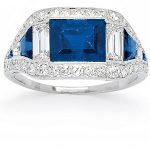
Art Deco Sapphire, Diamond and Platinum Ring, Tiffany & Co., circa 1925, sold for $12,000 at Fall 2017 Important Jewels auction.
As Holly Golightly will tell you, “Nothing very bad could happen to you there.”
She’s referring of course to Tiffany & Co.’s flagship jewellery shop on Fifth Avenue in New York City.
From their legendary heart tag bracelets to their iconic Tiffany Blue Box, Tiffany & Co. is arguably one the world’s most recognizable, popular and timeless jewellery brands.
From Art Deco era masterpieces to the modern Tiffany T collection – the debut for the brand’s first female Design Director, Francesca Amfitheatrof – Tiffany & Co. has endured in popularity for decades. Their jewels are a staple on the red carpet and their signature designs coveted by women everywhere.
Interestingly, the jewellery house didn’t start out selling jewellery, at least nothing more than costume pieces. The brand began as Tiffany & Young in 1837, purveyors of stationary and fine giftware.
It wasn’t long before Tiffany’s began offering European-imported jewellery, eventually acquiring their own stock of diamonds and gemstones. By the turn of the century, Tiffany’s had begun to solidify their reputation as an innovative and trendsetting jewellery house.

A Pink Tourmaline, Diamond and Gold Bracelet, by Tiffany & Co., sold for $46,000 at Dupuis June 2017 Important Jewels auction.
The start of signature designs
In the 1950s, Tiffany & Co. began featuring individual designers, starting with Jean Schlumberger, the creator of Tiffany’s classic “X” bangles, as well as brightly coloured, enameled animal motifs. He was the first designer the brand allowed to sign his work. His extensive Sixteen Stone and Ropetwist collections are considered new classics.
Only a handful of other designers for Tiffany’s have this honour: Paloma Picasso, Elsa Peretti and Frank Gehry.

A Diamond, Platinum and Gold ‘Lynn’ Bracelet, Schlumberger, Tiffany & Co., sold for $6,500 at Fall 2018 Important Jewels auction.
In the 70s, Peretti’s simple and elegant designs transformed the way we wear diamonds, making them suitable for every day, in addition to upgrading sterling silver. Picasso joined Tiffany’s in 1980, bringing flair and sophistication with her bold designs.
Cherished symbols of style
Not the work of a famed designer, but certainly a signature motif, is the Return to Tiffany ® collection. Perhaps the most famous of all their designs, the heart tag bracelet is at the forefront of this contemporary collection that also features pendants, bangles, cuffs and earrings, all emblazoned with the well-known phrase.

Gold ‘Atlas’ Bangle Bracelet, Tiffany & Co., coming up for sale at June 2020 Important Jewels auction.
The story behind the iconic expression goes back to 1969, with the introduction of the Return to Tiffany ® key ring inscribed with “Please Return to Tiffany & Co. New York,” and each one assigned a unique number. The idea was that if anyone were to lose their keys, they would be able to retrieve them from the famed Fifth Avenue shop.
The phrase has now simply become an invitation to visit the ultimate style and luxury locale, in the heart of NYC.
Also easily recognizable, the iconic Atlas collection featuring Roman numerals, is reminiscent of the storied clock that decorates the exterior of the flagship building. A mundane everyday object like a household key, becomes in the hands of an inspired designer, a popular selection of diamond-set pendants.
Pleasures of Keeping Current
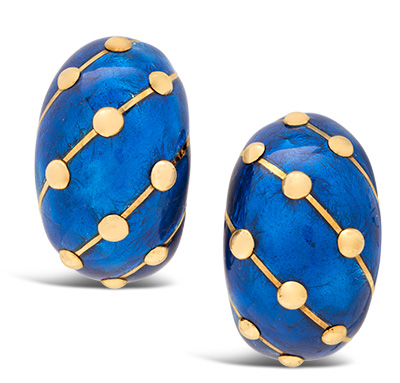
With warmer weather ahead, this usually means spring cleaning and a wardrobe overhaul. But what about your jewellery collection? Of course there are significant pieces that will always have a place in your jewellery box, but it may be time to take stock and toss certain stale accessories.
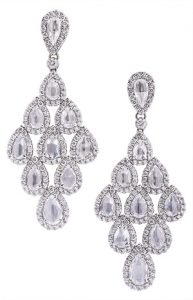
Pair of Diamond and White Gold Ear Pendants, by Myles Mindham, Spring 2020 Important Jewels Auction. Estimate: $20,000-$30,000.
How to take advantage of jewellery trends and still shop smart
The good news is that jewellery trends typically evolve at a slower rate than clothing trends, so you don’t need to strain your wallet to keep up. You can also stick to fashion jewellery for the more outrageous trends. That way you can still have some fun without overspending on something you might not get much wear out of in the long run. Save the larger investment for pieces that will remain timeless for you, regardless of what’s happening on the runway.
While taking inventory of your current jewellery collection, you can also keep an eye out for gemstones that could be rescued from a worn, dated setting and reimagined in a fresh new style. Not only is this a sustainable, economical approach to enhancing your jewels, it’s also a way to finally get some wear out of the sentimental pieces you’ve been hanging onto but would never wear in their current state. In fact, this current take on the three environmental Rs is an emerging trend in itself among jewellers, as consumers continue to care more and more about environmental impact.
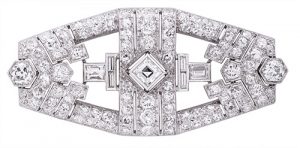
Art Deco Diamond and Platinum Brooch, Spring 2020 Important Jewels Auction. Estimate: $4,000-$6,000.
Be aware though, that very often the value is not in the intrinsic worth of any particular gem. For instance, breaking up a classic Art Deco piece into its constituent bits is a major no-no. In such a case, it’s preferable to find a different good home for it, keeping the integrity of the design; choose to sell at auction, for example, and use the proceeds for something in a style that you will enjoy wearing.
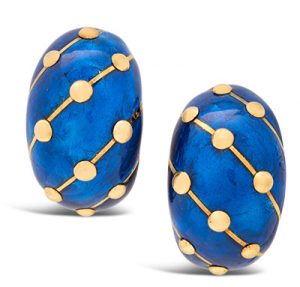
Pair of Enamel and Gold Ear Clips, Schlumberger, Tiffany & Co., Spring 2020 Important Jewels Auction. Estimate: $5,500-$7,500.
Spring jewellery trends for 2020
Let’s take a look at what Spring fashion forecasters are calling for this season – and what these new pieces could replace:
In: Supersized earrings
Hoop earrings never seem to go out of style, but this year it’s all about the power hoops: big, shiny, colourful, bold.
If you really want to make a statement, you could always opt for the single earring, a look that dominated several runways this Spring. Just make sure the earring is substantial enough to make an impact on its own.
Out: Ear crawlers & huggie earrings
Spring jewellery trends this season are spotlight stealers, not wallflowers. It’s time to trade in those easy-to-wear, but often overlooked tiny earrings and huggie hoops for something more stylish.
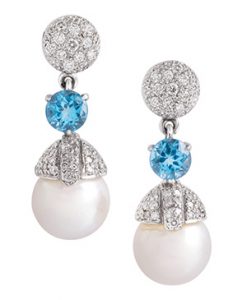
Pair of South Sea Cultured Pearl, Blue Topaz, Diamond and White Gold Ear Pendants, Spring 2020 Important Jewels Auction. Estimate: $1,000-$1,400.
In: Pearls
A feminine classic that will remain a jewellery staple, pearls are getting a lot of wear this season, and not just as a simple strand around the neck: designers are using pearls in fresh new ways, from single earrings to headpieces and even sculptured shapes.
Out: Bohemian chokers
It’s time to set aside those Coachella-esque fabric chokers. This season is inspired by more masculine styles, such as signets and medallions.
In: Colour
Designers are getting playful this spring, especially with the use of bright hues, vibrant floral motifs, candy-coloured beads, and rainbows of baguette gems. This trend is all about having fun, creating unique looks with a mishmash of stones and metals.
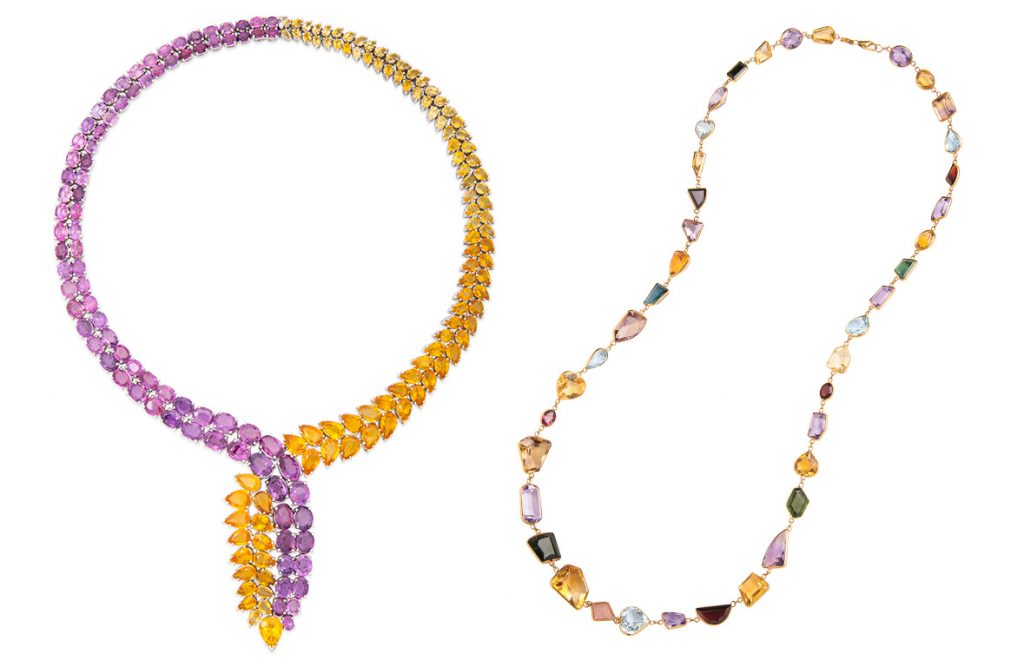
Multi-Coloured Sapphire and White Gold Necklace, Spring 2020 Important Jewels Auction. Estimate: $15,000-$20,000. (left) Multi-Gem and Gold Necklace, Spring 2020 Important Jewels Auction. Estimate: $2,000-$3,000. (right)
Out: Blackened metals
Spring brings the welcome return of sunny days and vivid colours, which leaves little room for dull or dreary metals.
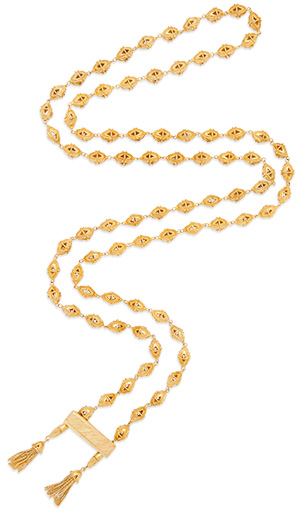
Long Gold Necklace, Spring 2020 Important Jewels Auction. Estimate: $7,000-$8,000.
In: Chains & charms
Oversized chains were huge (literally and figuratively) on the runways this Spring, from sparkling to enamel, layered to textured. Chunky links reign supreme for necklaces this Spring.
Charms and long, layered lariats are a lighter, yet just as fashionable option, worn draped around the neck like a scarf.
Out: Bib necklaces
This Spring, it’s either chunky choker or long chain – no in-between. That means bye-bye to bib necklaces.
Perhaps the biggest takeaway for what’s trending in Spring 2020 jewellery design is freedom and personalization. Customized elements, specialty-cut stones, and fearless mixing and matching will have your jewellery collection on point this season. Overly simplistic or delicate pieces are on the way out as more jewellery lovers gravitate toward bold, standout pieces that reflect their own unique personal style. But remember, if simple and delicate is your default comfort zone, experimenting can be fun. And rules are meant to be broken.
Adored amethyst February’s traditional birthstone
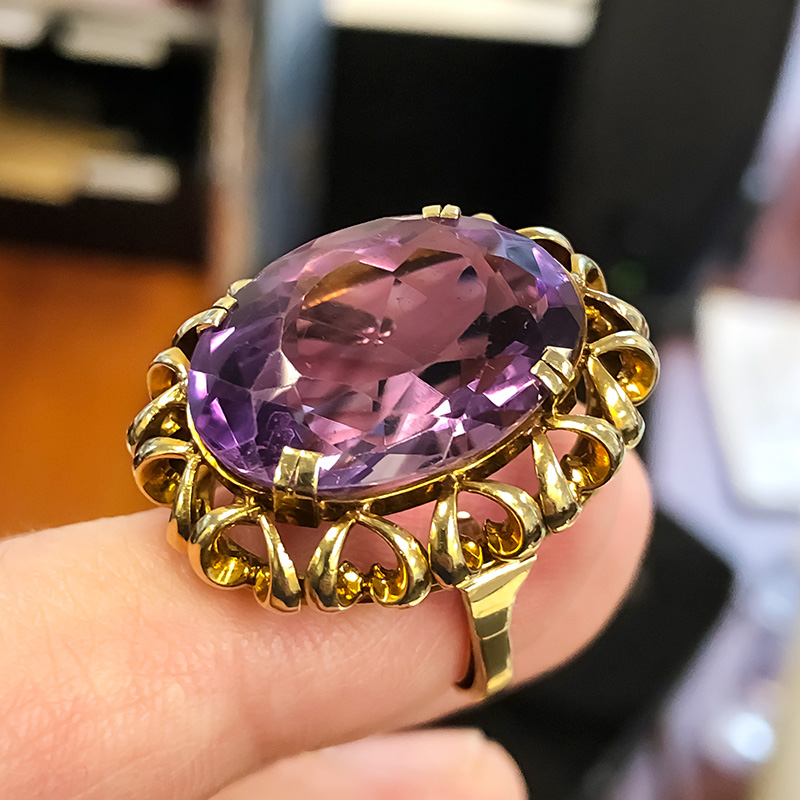
There are few gems as versatile as the amethyst: regal enough to adorn crown jewels, yet also accessible enough to enhance fashion jewellery.
Shopping for a Valentine’s Day gift or a February birthday gift? Amethyst is a stunning choice for a fine jewellery gift. Aside from its beauty, amethyst is also a stone steeped in symbolism.
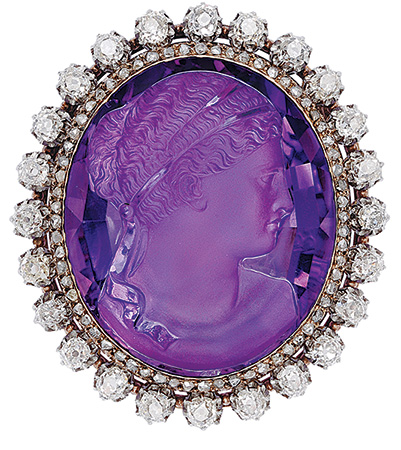
Antique Amethyst Cameo and Diamond Brooch, sold for $10,000 at Dupuis.
Amethyst birthstone history and meaning
Amethyst owes its name to its deep purple hue. Being the colour of grapes, ancient Greeks associated the gem with Bacchus, the god of wine. The belief was that wearing the stone would protect one from drunkenness. Their word for this remedy was amethystos. Still today it is often worn as a symbol of sobriety and thought useful in overcoming addiction or overindulgence of any kind.
Amethyst is considered to be a highly spiritual stone, a staple in meditation and often used in malas and Tibetan prayer beads. It is thought to enhance intuition, relieve stress, and promote balance, either stimulating or calming the mind, as appropriate.
The traditional February birthstone also has ties to royalty, thanks to its coveted colour, purple being considered a distinctly regal colour. The Russian Empress, Catherine the Great, was fond of the gem and it appeared frequently in her jewellery collection. This was during a time when amethyst was still rare and expensive, with Russia being the main source of the stone. An amethyst suite believed owned by the Empress Josephine was redesigned to include a tiara and is now part of the Swedish monarchy’s crown jewels. During the Victorian era, the stone took on a somewhat sombre use to appropriately signify a period of mourning.
In the 19th century a large amethyst deposit was discovered in Brazil, with other sources found in Africa, Bolivia, Canada and the US.
Although amethyst became less costly as it became more common, it was also given more occasion to shine, and began to appear frequently in jewellery design, especially during the Edwardian era in graceful lavalier necklaces with multiple garland festoons.
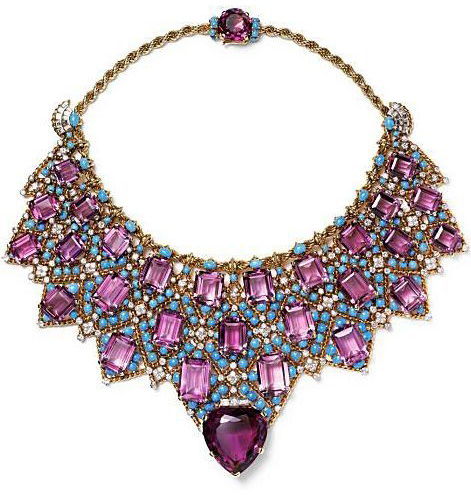
Wallis Simpson, the American socialite turned Duchess of Windsor, famously wore a Cartier amethyst and turquoise bib as part of her exquisite and memorable collection. An impressive history for a crystal considered to be a gem of personal empowerment.
Amethyst birthstone characteristics
Amethyst is a type of quartz, available in a variety of weights, shapes and sizes, from hollowed out geodes big enough to stand inside to multifaceted polished cuts and cabochon beads used by jewellery designers. The colour can range from deep plum to pastel lavender with zones of darker and lighter colours. The reddish purple shades are typically the most valuable, but all are beautiful.
Amethysts are known for their striking clarity with relatively few inclusions and rate a 7 on the Mohs hardness scale. This means amethyst is strong enough to wear daily. Still, amethyst should be stored with care to protect against scratching (from rubbing against harder gemstones or abrasive cleaners, for example). Amethyst jewellery can be cleaned with mild soap and warm water and is generally safe in an ultrasonic machine.
How to wear amethyst birthstone jewellery
If you’re drawn to bold jewellery, amethysts can often be found as a prominent feature in very large cocktail rings. Even today, it’s not uncommon to see stunning gems weighing more than 30 or 50 carats and larger set in rings or pendants.
Gems in high jewellery: reimagining “semi-precious” stones
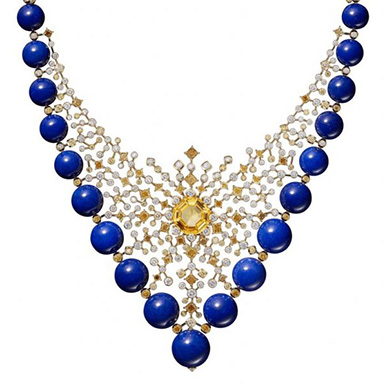
When you think of high jewellery, visions of diamonds and sapphires typically appear, along with rubies and emeralds. These “Fab Four” precious gemstones have been the cornerstones of leading jewellery houses for well over a hundred years, and will certainly continue to take centre stage.
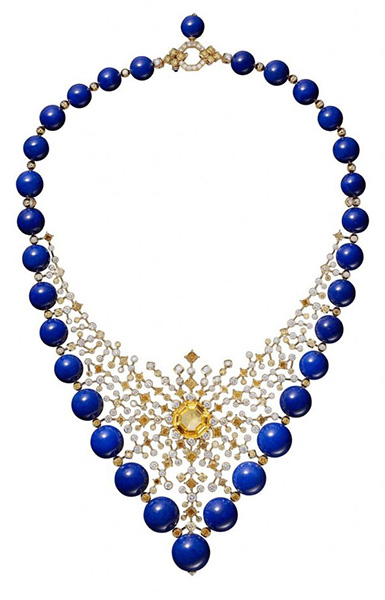
Cartier has created “a dialog between stones” with their Magnitude collection. This Equinoxe necklace features spheres of lapis lazuli surrounding lacework diamonds and yellow sapphires in yellow gold
However, as seen in several haute couture collections that debuted earlier in 2019, there is room in high jewellery for so called “semi-precious” gems in addition to our usual shiny suspects. Some in the jewellery industry find the term itself somewhat outmoded but still useful in differentiating it from the Fab Four group. Designers have no qualms about creatively using such semi-precious stones – they were front and centre in several pieces crafted by jewellery’s biggest players, proving these stones are far from inferior when it comes to fashion.
Uplevelling ornamental stones
Semi-precious gems are often reserved for fashion jewellery and generally available at a much lower price point than high jewellery. There have been notable exceptions of course, namely during the Art Deco era, known for the dramatic use of contrasting diamonds with the bold colours of black onyx, red coral and green jade in various geometric patterns. These accents were cut as cabochons, panels and plaques, again contributing to the striking juxtaposition of materials.
For many top design houses, the exotic earthiness of these shaped stones draws on a slightly different appeal than the usual spectacle of a facetted gem: in this case, gems are embraced for their typical inclusions, unique textures and saturated hues.
Semi-precious stones working in harmony with precious gems
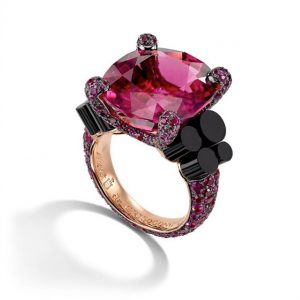
Tourmaline ring by GRISOGONO.
High jewellery’s leading designers have managed to elevate these minerals to a higher degree of status through the same level of workmanship and attention to detail you would expect from the world’s most prestigious brands, setting them in a way that brings out their natural beauty.
Combined with their more precious counterparts, an appealing aesthetic is the desired effect; for example, pairing any matte bead, such as lapis lazuli, with sparkling stones will create a distinct contrast in both colour and texture.
The union of precious and semi-precious gems can be seen in several elite collections, solidifying the acceptance of these types of stones in high fashion.
During the 72nd Cannes Film Festival in May of 2019, Swiss jeweller de GRISOGONO, showcased an haute joaillerie collection, the Art of Technicolour, a tribute to cinema featuring vivid shades and unique cuts. This pink gold ring is set with an oval-cut rubellite, flanked by smooth cylindrical-cut onyx and adorned with rubies.
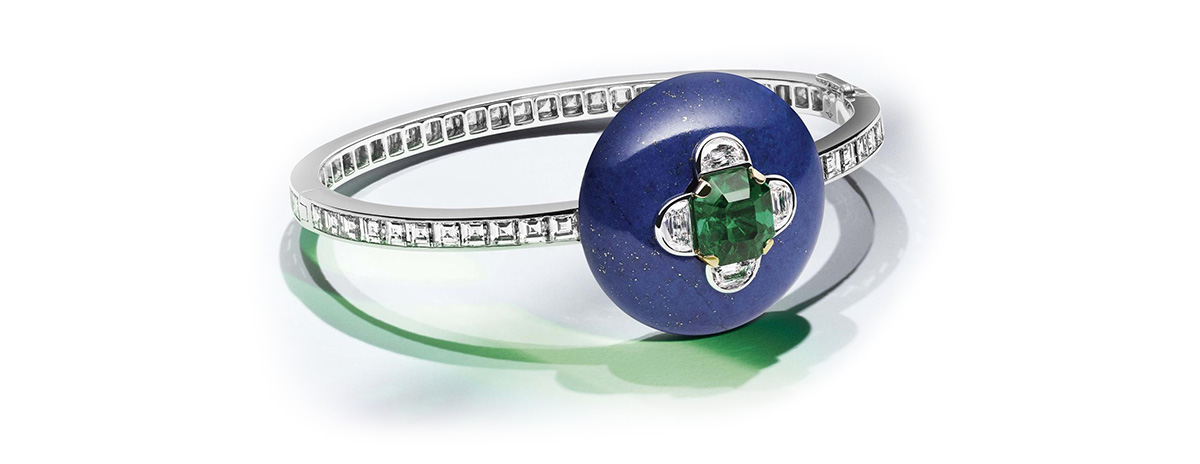
Louis Vuitton ‘Riders of the knights’ lapis, diamond and emerald bracelet.
Paying homage to Medieval heroines and heroes, Louis Vuitton’s Riders of the Knight collection launched in Paris during Couture Week. This bangle bracelet highlights gold-flecked lapis lazuli with emeralds and diamonds in white gold.
There will always be a place for precious gems; this expression of creativity and disruption of haute joaillerie traditions is making way for new innovations – a sure sign of the times and a new take on style.
Emeralds the Spring Gems
It is said by poets that there are a thousand shades of green, and at a time of year when Spring is springing up all around us, who can deny that verdant thought.

Emerald and Diamond Ring, by Bulgari realized $55,000 at Dupuis.
Emerald, the pure rich vibrant green variety of the mineral beryl, can reflect all of those poetical tones, matching the first signs of nature’s annual spring rebirth and ably suited to be the birthstone for the month of May.
Green is considered a gentle colour, a restful colour, a peaceful colour. The Ancients, from Aristotle, to Nero and Hippocrates, believed in the soothing, medicinal properties of the emerald. First believed to have been discovered in either Egypt or India thousands of years ago, the gem was known to be a favourite of Cleopatra. During the sixteenth century, deposits found in Colombia eclipsed all other sources in both quantity and quality and emeralds from the renowned Muzo mine continue to hold that preeminent status today.
The venerable emerald – its colour symbolizing calm new life and nature’s continuous cycle of rebirth – is at the same time both lively and soothing, worthy of consideration as your favourite special occasion gemstone.

Important Pair of Emerald and Diamond Ear Pendants realized $125,000 at Dupuis.
Famous examples include the Duke of Devonshire’s uncut emerald weighing almost 1400 carats; legendary jewels worn by the Nizams of Hyderabad, the Mughal royals and Maharajahs, were encrusted with emeralds of staggering beauty; Russia’s Catherine the Great owned magnificent specimens; Liz Taylor was gifted notable emeralds from her very generous husband, Richard Burton. Queen Elizabeth II is often photographed wearing a spectacular crown adorned with pear-shaped emerald drops, inherited from her jewellery-loving grandmother, Queen Mary.
The clarity and transparency of an emerald is affected by naturally occurring fissures, seen as noticeably eye visible inclusions and typically found in all emeralds, to a lesser or greater degree. The gems benefit from accepted industry treatments used to improve their appearance. These internal features, are poetically termed “jardin”, the French word for garden.
The upcoming auction features a great variety of emerald jewels.
Climbing aboard the aquamarine trend

From trending pretty, pastel-coloured gems to a royal wedding-inspired “something blue,” aquamarine is a stylish addition to any jewellery collection, for any occasion. The icy blue hue of this striking gemstone offers a unique, almost whimsical appeal and a nod to vintage and retro charm, especially when paired with the ever popular white gold or platinum, and accented by diamonds.
Aquamarine – not just a sailor’s delight
Long associated with the sea (its name derived from the Latin for “seawater”), aquamarine has been called the sailor’s lucky stone, guarding against the perils of the ocean, and was also thought to enhance intuition when worn. Aquamarine is also the traditional birthstone for those born in March. This feminine gem is now a statement piece for the chic and modern woman – sea-faring or otherwise.
When it comes to gemstones, royalty knows best
Of course, you don’t need to take our word for it: the rising Aquamarine wave surged even higher after last year’s royal nuptials when the newly named Duchess of Sussex, Meghan Markle, was spotted waving the dazzling emerald-cut aquamarine ring once worn by the late Princess Diana. The bespoke cocktail ring designed by the iconic British jewellers, Asprey, brought the something blue tradition to a new level, while also paying tribute to Prince Harry’s mother and reminding us of the significant impact heirloom jewellery can have.
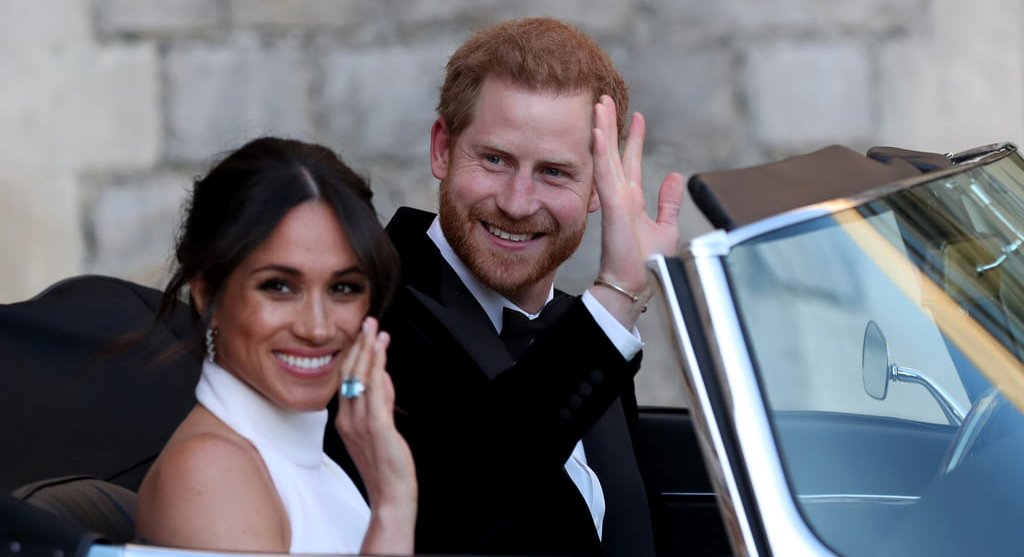
Image Source: Getty
Adding aquamarine to your collection
A member of the beryl mineral family, aquamarine is as durable as it is bold, and is suitable for everyday wear – it’s also a very affordable gem even when weighing in a range larger than 10 carats or even nudging north of 40 carats. Whether you’re looking for a show-stopping complement to your wedding day jewellery or are simply drawn to the effortless charm of this distinctive gemstone, Dupuis Fine Jewellery Auctioneers offers several one-of-a-kind aquamarine pieces:

